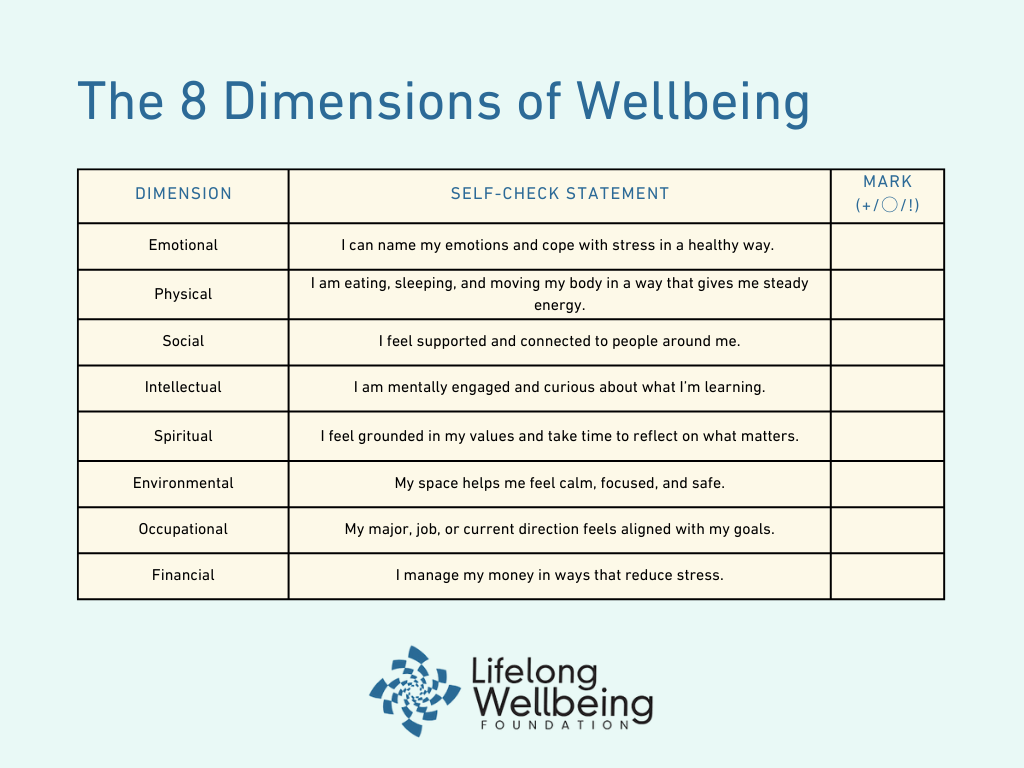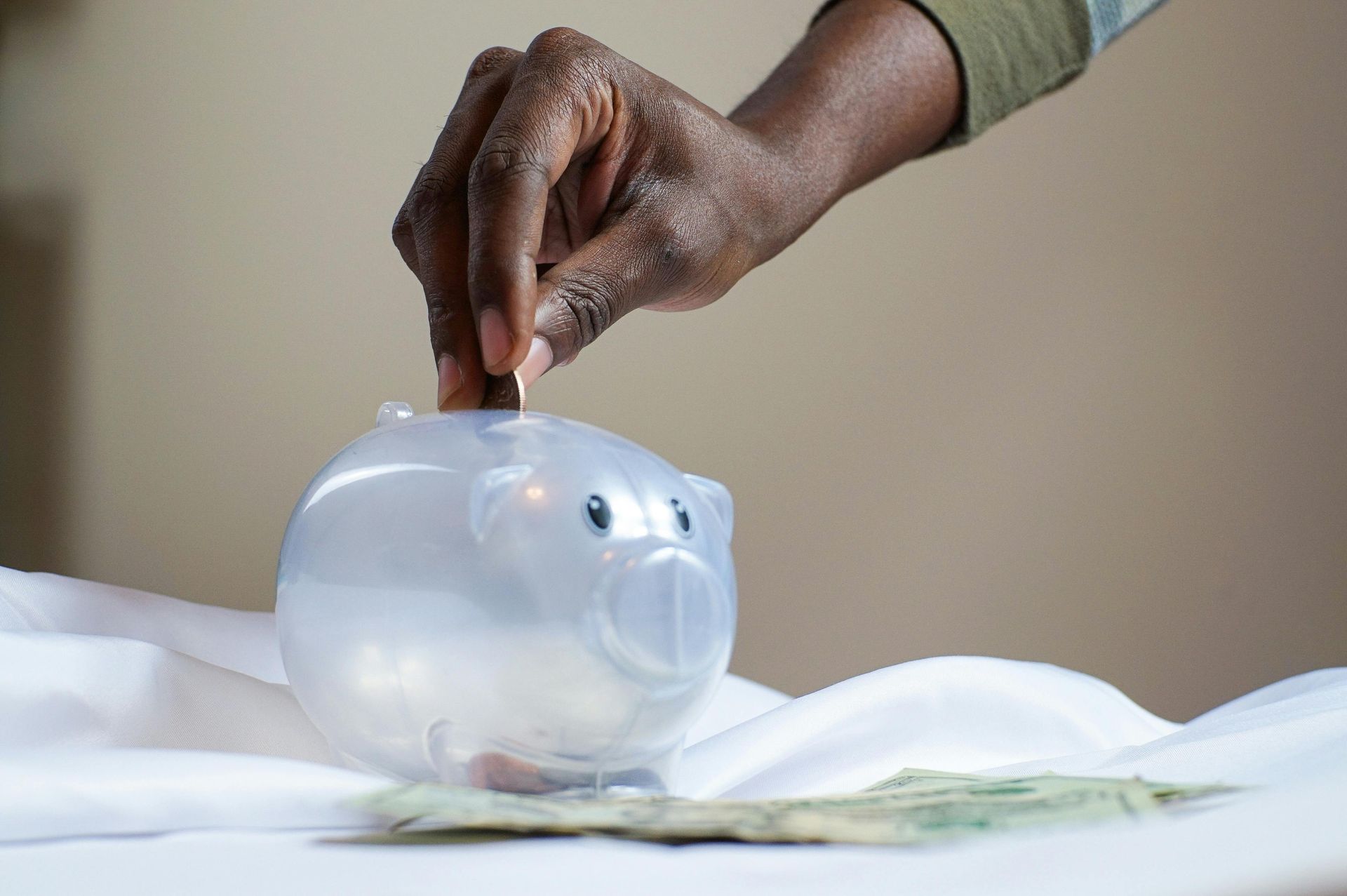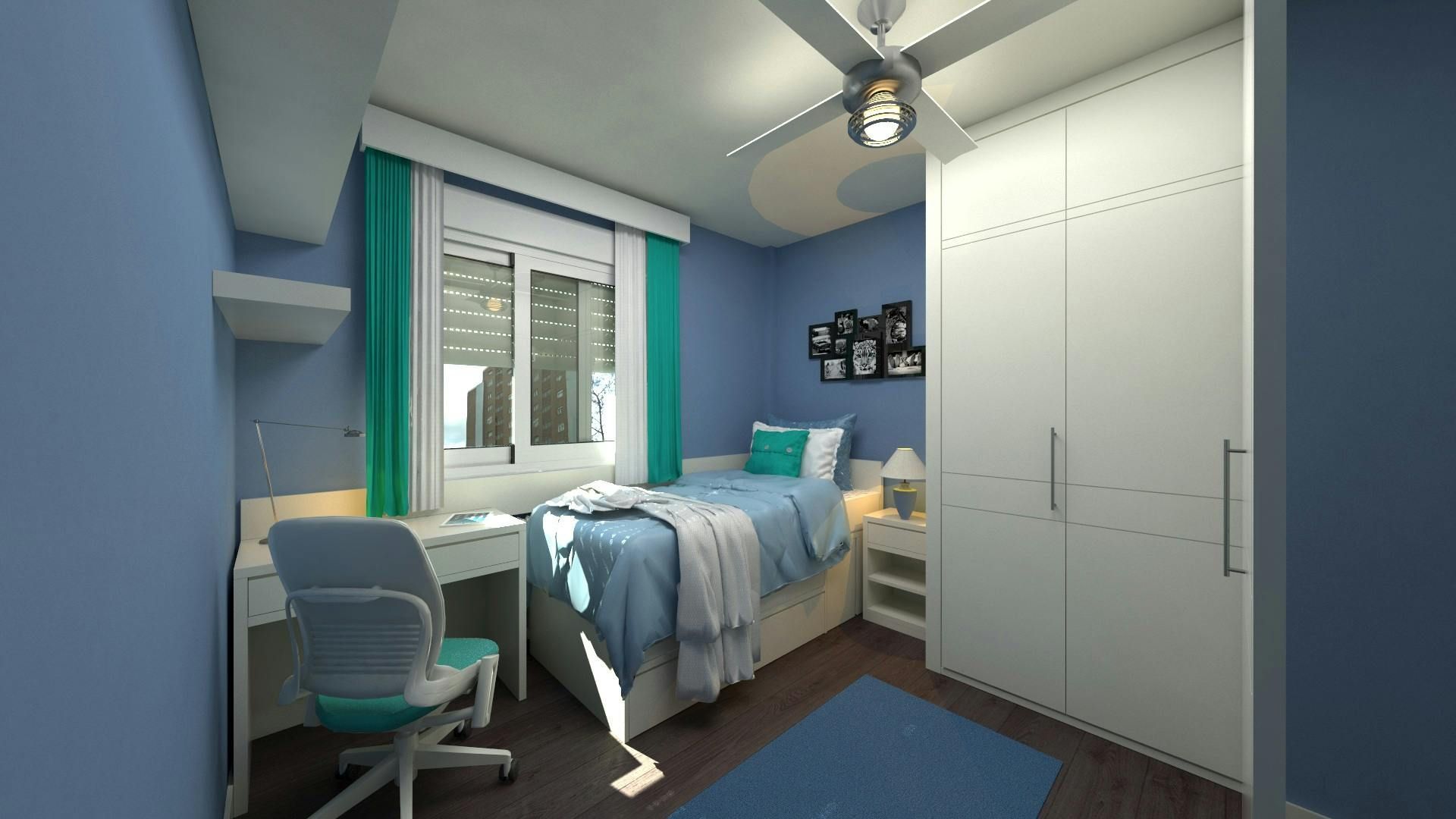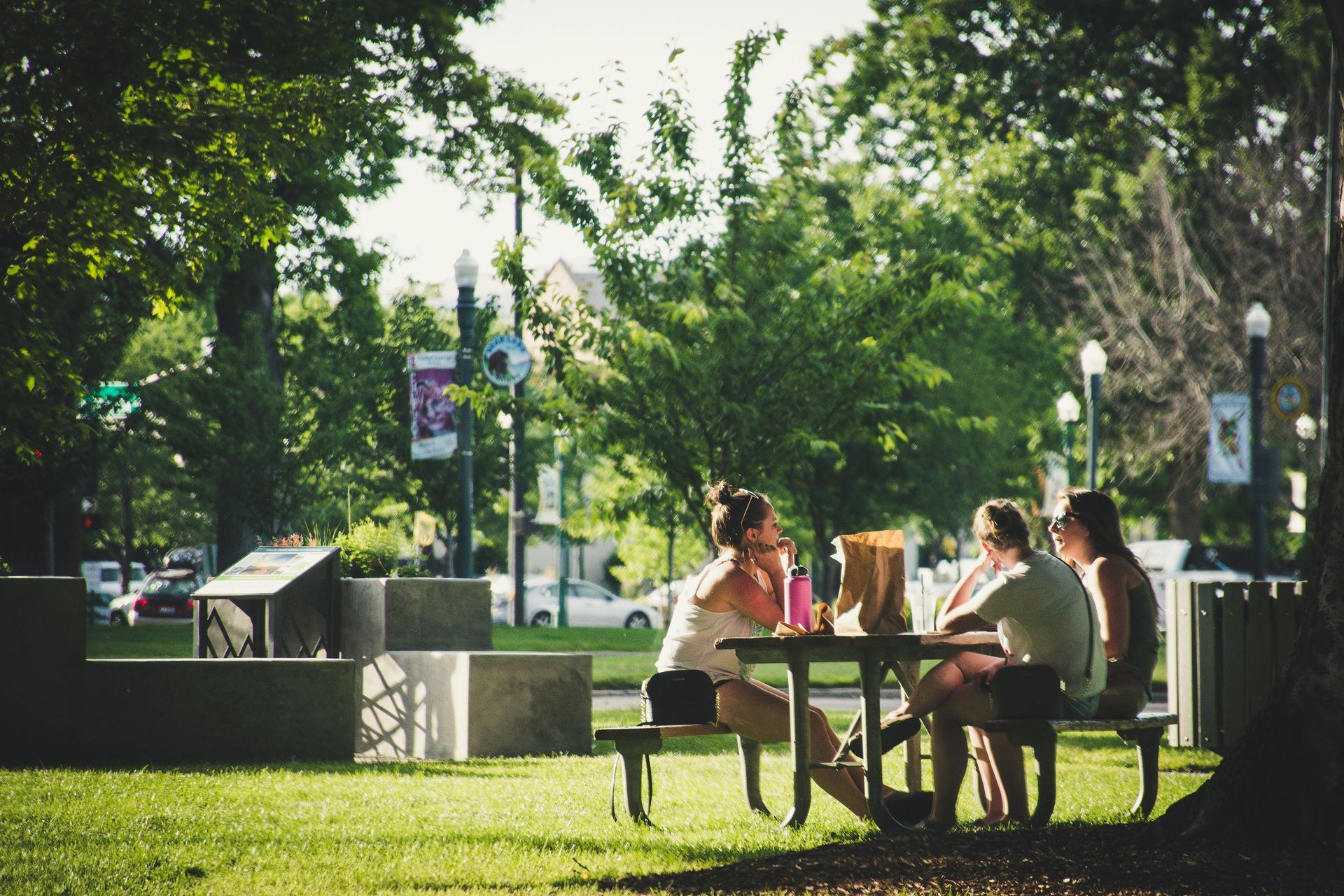The Student Wellbeing Check-In: Pinpoint Where to Start Growing Stronger
Wellbeing can feel overwhelming, especially with 8 different dimensions to consider. So how do you know which one to focus on first?
Trying to improve everything all at once is NOT the answer. That’s why we recommend a simple assessment to help you figure out where to focus your energy first. You don’t need to answer a whole bunch of questions. Just take a few minutes for honest reflection and to make a few simple marks.
Before you dive in, pause for a moment, take a deep breath, clear a little space around you, and give yourself permission to focus fully.
Step 1: Score Each Dimension
Read the statement attached to each dimension and give it one of the following symbols:
- (+) Flourishing – You feel strong, stable, or confident in this area. This dimension is going well right now.
- (○) Stable – This dimension is going okay in that it isn’t great but not falling apart either. It’s something to keep an eye on.
- (!) Challenging – This is where you’re struggling or feeling the most out of sync. This is your starting point.

Step 2: Look at the Opportunities
Focus on the dimensions where you placed a (!). These are the spots where small steps can create the most positive change. If you marked more than one, choose the one that feels the hardest. Mark Twain once said, “if it’s your job to eat two frogs, best eat the big one first.”
Tackling the toughest spot first can lift a surprising amount of pressure from the rest of your life.
Step 3: Save the Circles for Later
The (○) Circles are “keep an eye on it” areas. They might not need your energy right now, but they’re good to revisit when things settle or you feel you’ve made progress with the “big frogs”. In a month, come back and re-mark the dimensions. See if anything has shifted. You could also find ways to make your Stable dimensions part of the work you’re doing in a Challenging dimension…we like to call this habit stacking. For example, if you’re working on Physical Wellbeing by going to a weekly workout class, could you include Social Wellbeing by doing it with a friend?
And your (+) Plusses? Awesome job! Don’t skip over what’s already working! These are strengths you can lean on and celebrate. Take time to reward yourself for at least one of the dimensions you’re flourishing in. Here are some ideas:
Emotional
Treat yourself to a cozy night in with your favorite comfort movie or playlist.
Physical
Get yourself a smoothie, massage, or new pair of comfy socks or walking shoes.
Social
Host a little get-together or plan a fun night with people who bring you joy.
Intellectual
Buy a book just for fun or spend time diving into a topic that has nothing to do with school.
Spiritual
Light a candle, spend time in nature, or do something that feels personally meaningful.
Environmental
Get yourself a plant, a cool lamp, or a small piece of decor that makes your space even more “you.”
Occupational
Buy yourself a gift card for a coffee or small treat and include a note to your future self about why you’re proud of your current progress.
Financial
Set aside a few dollars specifically for something small that brings joy without blowing your budget.
Strength in one area can help support growth in others.
Coming Soon: Your Wellbeing Starting Point, a follow-up series with practical ways to strengthen each dimension. Wherever you begin, you’re not behind. You’re building your way forward, one step at a time.










